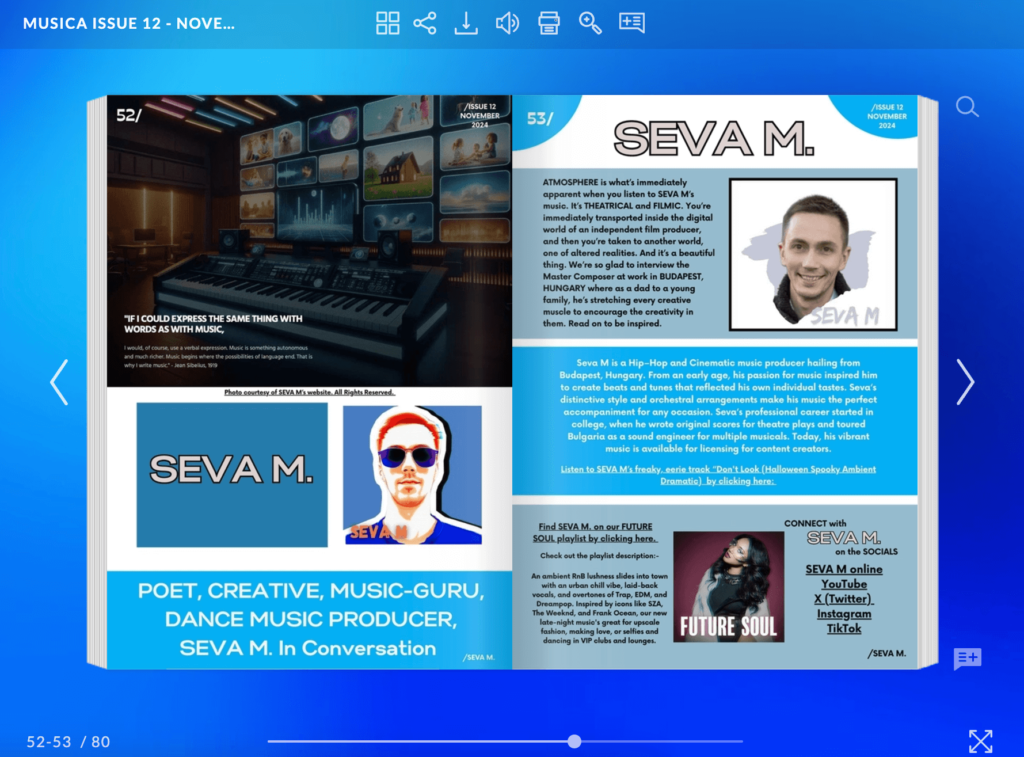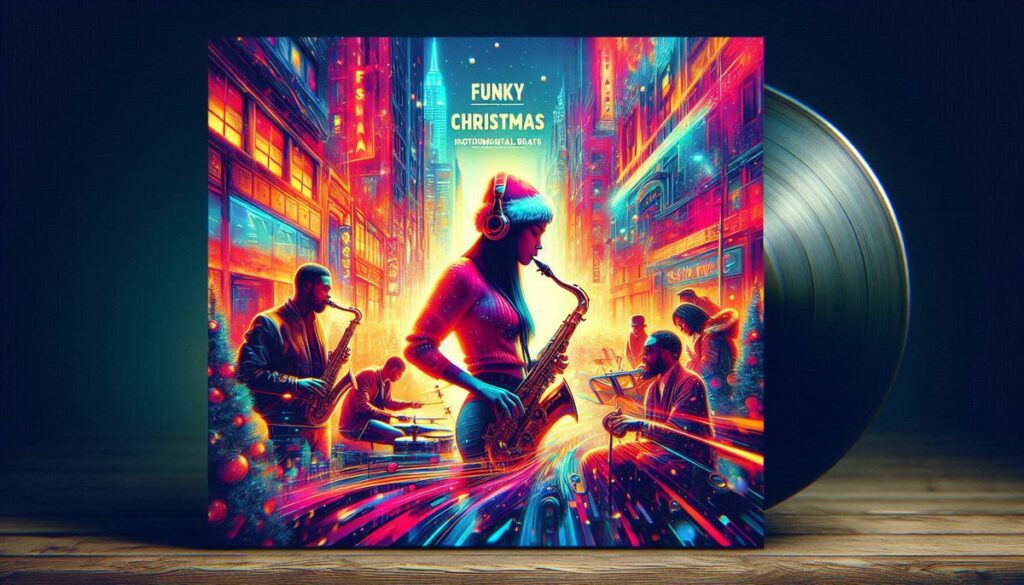Like so many of you, music is my passion – but it’s not my full-time gig. Between balancing work and family life (yes, kids included), I’d always wondered if my music could make a difference to someone else – and maybe even earn a little income. I’m not chasing the spotlight or building a social media empire. I just wanted to see if the tracks I’ve poured my heart into could find a place in the stock and sync licensing world.
So, for 30 days, I focused on nothing but this. No Instagram strategies, no playlist hustling, no contests – just licensing. The results? Spoiler: it’s been a wild mix of excitement, learning curves, and small victories. But here’s the catch – 30 days turned out to be nowhere near long enough to draw final conclusions.
Purpose
This journey was all about exploring what it takes to make money with music through stock and sync licensing. Could I turn my existing catalog into something useful? How much effort and know-how would it take to get music approved by these platforms? And, most importantly, does it actually pay off?
Goals
I set out with these priorities in mind:
- Understand stock and sync licensing, their differences, and build realistic expectations.
- Upload 30 tracks to each stock library I was already familiar with – and explore new platforms to expand my reach.
- Update my website and profile pages to look polished and professional.
- Create a catalog complete with metadata (descriptions, keywords, etc.) so I can easily re-use it later for other libraries or platforms.
- Start building a network and learning from others already in the field.
- Write and pitch new material tailored for sync libraries.
This blog isn’t about perfection or having a foolproof plan. It’s about diving in, learning as you go, and sharing the reality of navigating the music licensing world. If you’ve been hesitating, let this be your nudge to start exploring what’s possible.
The Journey
Part 1: Finding My Rhythm
The first week was all about rediscovering the basics, experimenting with platforms, and figuring out how to work smarter, not harder. Even though I wasn’t starting from zero, this was the first time I’d given my full attention to the stock and sync licensing game. And let me tell you – there’s a lot to juggle. While some tools felt overcomplicated or out of reach (looking at you, TAXI Music), others revealed unexpected potential.
I began by assessing my existing catalog: cinematic orchestral tracks, EDM, meditation music, holiday tunes, and a few vocal pieces. While the variety felt like a strength, it quickly became clear that organizing and uploading this collection would be a challenge in itself. Metadata, keywords, descriptions – it all matters, and I learned that good preparation can save hours later.
One of the biggest hurdles was the repetitiveness of uploading tracks. Adding one track to a single library, tagging it, and writing a description could easily take 20–30 minutes. Thankfully, I discovered features like bulk editing and CSV uploads, which transformed my workflow. While not all platforms supported them (123rf’s FTP setup later turned out to be a fail), where they worked, these tools made a massive difference, allowing me to upload 6–7 tracks per hour. Using ChatGPT was another game-changer for metadata. From generating descriptions to reformatting keywords – switching everything to lowercase, removing commas, or excluding certain words – I could handle repetitive tasks more efficiently.
In this first week, I focused on uploading a few new vocal tracks, as they’ve been my main passion lately, and penciled in a couple of solo piano instrumentals to diversify my submissions. Platforms like Pond5 and AudioSparx were my starting points, but the simplicity of Jamendo’s upload process also caught my attention.
The first seven days were productive but also humbling. I made progress – new tracks uploaded, profiles updated, and tools discovered – but it was clear that there’s a steep learning curve. By the end of the week, I was starting to find my rhythm, but I knew I’d need to refine it as the journey continued.
Part 2: Picking Up Momentum
Looking back at some early attempts to crack this world about a year ago, I remembered the sting of rejection. My applications to Artlist and MotionArray had been turned down, and I’d realized that Epidemic Sound wasn’t even an option for me due to geographic limitations. At the time, those roadblocks felt discouraging. But now, armed with fresh determination and a more systematic approach, I was ready to push forward.
In this stretch, batch uploads became my new best friend. With a clearer understanding of metadata and bulk editing, I found my pace. Platforms like Pond5 and AudioSparx were starting to feel like home, and I began exploring others, including 123rf – but their FTP setup was a complete failure. Despite multiple attempts, I couldn’t upload anything, and their support was unresponsive, which was frustrating.
I also came across TAXI Music, a service that notifies artists about sync opportunities, providing details on exact tracks their clients need. While it seemed promising, the steep subscription fee made it inaccessible for me at this stage. Still, I subscribed to their newsletters to stay in the loop about trends and potential opportunities.
Just as the week was wrapping up, something unexpected added fuel to my motivation: AudioSparx published an interview with me in their brilliant MUSICA magazine! Seeing my work spotlighted felt incredible, and it reminded me why I’m doing this. Sure, the process is slow, and the results are still taking shape, but moments like that make it all feel worthwhile.

By the end of the second week, I was picking up momentum. My catalog was growing, my methods were improving, and my excitement was building. I was starting to see that every track uploaded, every tweak to a description, and every new platform explored was a step forward in this journey.
Part 3: Reality Check and Holiday Spirit
The third week marked a deeper dive into both the technical and creative sides of this journey. I focused on uploading some of my favorite holiday-themed tracks – Halloween and Christmas orchestral arrangements I’d created in the past. These pieces felt like a strong fit for the stock libraries, given their seasonal appeal and polished sound.
A significant portion of my time this week was spent working through Sync Academy courses. The material was dense but invaluable, covering everything from industry best practices to creative tips for crafting sync-friendly tracks. My notebook quickly filled with ideas, strategies, and “a-ha” moments that were already starting to influence how I approached my work.
I also made the decision not to enroll my tracks in YouTube Content ID. While the system has its merits – offering monetization for unauthorized usage – it can also scare off potential buyers who prefer hassle-free licensing. For now, I chose to prioritize accessibility over short-term revenue, keeping the door open to more opportunities.
A major milestone this week was signing up with BMI as my performance rights organization (PRO). Getting my identification numbers felt like a rite of passage and a step toward building a professional foundation. Knowing that I’m set up to collect royalties if my music is placed on TV or film was both reassuring and motivating.
This week also brought some hard truths. Stock music can generate income, but it’s a numbers game – success often requires hundreds or even thousands of tracks uploaded. On the other hand, sync licensing offers far greater earning potential, but it’s a slow burn. The bar for quality is high, and placements typically take years to materialize. Still, I found the challenge exciting rather than discouraging.
By the end of the week, I felt a mix of realism and determination. The holiday uploads were a bright spot, and the Sync Academy material provided a clearer sense of direction. I was starting to understand that this journey is less of a sprint and more of a marathon – and I was ready to keep running.
Part 4: Finding My Flow (Days 22–30)
The final stretch of the 30-day experiment was a whirlwind of creativity and strategy. This was the week I created and uploaded an entirely new project: Jingle & Flow, my jazzy Christmas hip-hop album. Inspired by the chill vibes of ’90s and 2000s East and West Coast styles, it was a fresh take on holiday music, blending funky basslines, jazzy trumpets, and festive grooves. What surprised me most was how quickly it all came together – a sudden wave of inspiration struck, and within days, the album felt cohesive, sync-ready, and exciting.

While stock libraries remained a part of the equation, I started preparing for the next big step: pitching to sync libraries. Using a template I’d fine-tuned, I submitted Jingle & Flow to one curated sync library and decided to give them a week to respond before moving on. While this meant I didn’t get results within the 30 days, it allowed me to build a clear plan for where to pitch in the coming months.
Here’s the pitching template I used:
Hi [library name] Team,
I hope you’re having a great week, and congratulations on your recent success with [recent placement] – [why I can relate to that placement].
I’m a composer and producer based in Budapest, Hungary, with over 10 years of experience creating music for theater, audiobooks, and video productions.
I wanted to share with you some fresh tracks for the holiday season. I’ve put together an instrumental jazzy Christmas hip-hop album titled Jingle & Flow, and I believe it could be a great addition to your library.
STREAMING LINK: https://seva-m.com/jingle-and-flow/
MP3 DOWNLOAD: [download link]
I would love to work with you; let me know if there’s anything I can do for you!
All the best,
Seva M.
Continuing through the week, I worked through more Sync Academy material, refining my understanding of how to craft music for sync. The emphasis on storytelling and emotional engagement profoundly influenced how I approached Jingle & Flow.
By Day 30, I had a tangible plan and momentum. The 30-day challenge hadn’t provided all the answers, but it had given me the confidence and tools to keep pushing forward. The journey was just beginning.
Results and Discoveries
Reflecting on this intense 30-day focus, it’s clear I’ve taken meaningful steps toward my music licensing goals. Here’s how the journey stacked up against the objectives I set at the start:
- Understand stock and sync licensing, their differences, and build realistic expectations.
Achievement: I deepened my understanding of these distinct paths. Stock music requires volume to see significant returns, while sync licensing demands higher quality but offers far greater earning potential. I also learned that building traction in sync can take years, but the long-term rewards make it worth pursuing.
- Upload 30 tracks to each stock library I was already familiar with—and explore new platforms to expand my reach.
Achievement: While I didn’t hit the 30-track target for every library, I successfully uploaded holiday arrangements, cinematic tracks, and solo piano pieces across several platforms. I also explored new libraries like AudioSparx and dabbled with tools like batch uploading and CSV editing, which drastically improved efficiency.
- Update my website and profile pages to look polished and professional.
Achievement: My profiles across platforms now reflect my evolving catalog. While I didn’t overhaul my main website entirely, I streamlined my presence on key platforms, focusing on metadata and professionalism to make a strong impression.
- Create a catalog complete with metadata (descriptions, keywords, etc.) so I can easily re-use it later for other libraries or platforms.
Achievement: This was a significant win. My metadata system—refined with the help of tools like ChatGPT—ensures that descriptions, keywords, and tags are polished and ready for future use. This groundwork will save hours when expanding to new libraries or pitching additional projects.

- Start building a network and learning from others already in the field.
Achievement: Sync Academy proved to be a treasure trove of knowledge, and I worked through a lot of their material, taking detailed notes, asking questions, and participating in discussions.
- Write and pitch new material tailored for sync libraries.
Achievement: In a surprising burst of inspiration, I composed and packaged Jingle & Flow—an instrumental jazzy Christmas hip-hop album—ready for sync pitching. While I only submitted it to one curated library within the 30 days, I developed a strategic plan for further pitches in the months ahead.
A Heartfelt Thank You
This journey wouldn’t have been the same without the incredible resources and encouragement from the community. A huge thank you to Jesse from Sync My Music for his invaluable insights, to Eric from Make Music Income for his practical advice and inspiration, and to Meryana from AudioSparx for spotlighting my work and helping me feel like a part of the industry. Their guidance and content were instrumental in making this experience both productive and rewarding.
The journey is far from over, but these 30 days laid a solid foundation. I’ve learned, grown, and developed a clearer vision of what it takes to succeed in this competitive field—and I’m ready to keep climbing.
Bonus Side Quest: AI and Stock Music Licensing
As AI continues to reshape the music industry, one of the side quests I embarked on was to understand how stock libraries are compensating contributors whose tracks are used to train AI models. I reached out to several libraries to inquire about their rates and how they handle AI training. While some details remain under NDA, I did get some fairly straightforward answers.
In general, it seems the pricing for AI training is relatively fair, though there isn’t a one-size-fits-all answer. Some libraries charge the same amount whether the track is used for AI training or regular commercial use, while others have specific pricing models depending on how long the training license lasts. Some offer perpetual rights (higher cost), while others provide a more affordable option that depreciates over time. From what I gathered, the price for a track used in AI training typically ranges between $5 and $20, depending on factors like whether the track includes vocals or if specific requirements are needed.
The good news is that these libraries are mindful of sharing revenue with contributors. In some cases, the same track can be included multiple times in AI datasets, and each time, the creator is paid. However, it’s important to acknowledge that as AI technology continues to advance, a significant portion of what currently generates income for musicians may eventually be replaced by AI systems. The silver lining is that, for now, even the most powerful AI models aren’t yet up to par with the quality required by high-end sync libraries.

